In the ever-evolving landscape of home life, creating a functional and inspiring home office has never been more crucial. Whether you’re stepping into the world of remote work for the first time or you’re a seasoned pro seeking to refresh your workspace, designing a home office that balances productivity and personal style is an art worth mastering. This is where your creative journey begins—right at the intersection of function and flair.
Imagine transforming a corner of your home into a sanctuary of focus and innovation, where every element serves a purpose and inspires your best work. This article will guide you through seven brilliant ideas to craft a home office that not only meets your practical needs but also speaks to your individuality and comfort. From choosing the right desk to optimizing lighting, you’ll discover actionable tips that cater to both novice decorators and those with a seasoned eye for design.
As you delve into this guide, you’ll find that creating the perfect home office is about more than just placing a desk and chair in a spare room. It’s about cultivating a space that reflects your personality while enhancing productivity, allowing your creativity and professionalism to shine. With each tip, you’ll gain insights to refine your workspace, ensuring it becomes a place where ideas flow as seamlessly as your design choices.
Ergonomic Furniture Selection (Enhanced Comfort and Productivity)
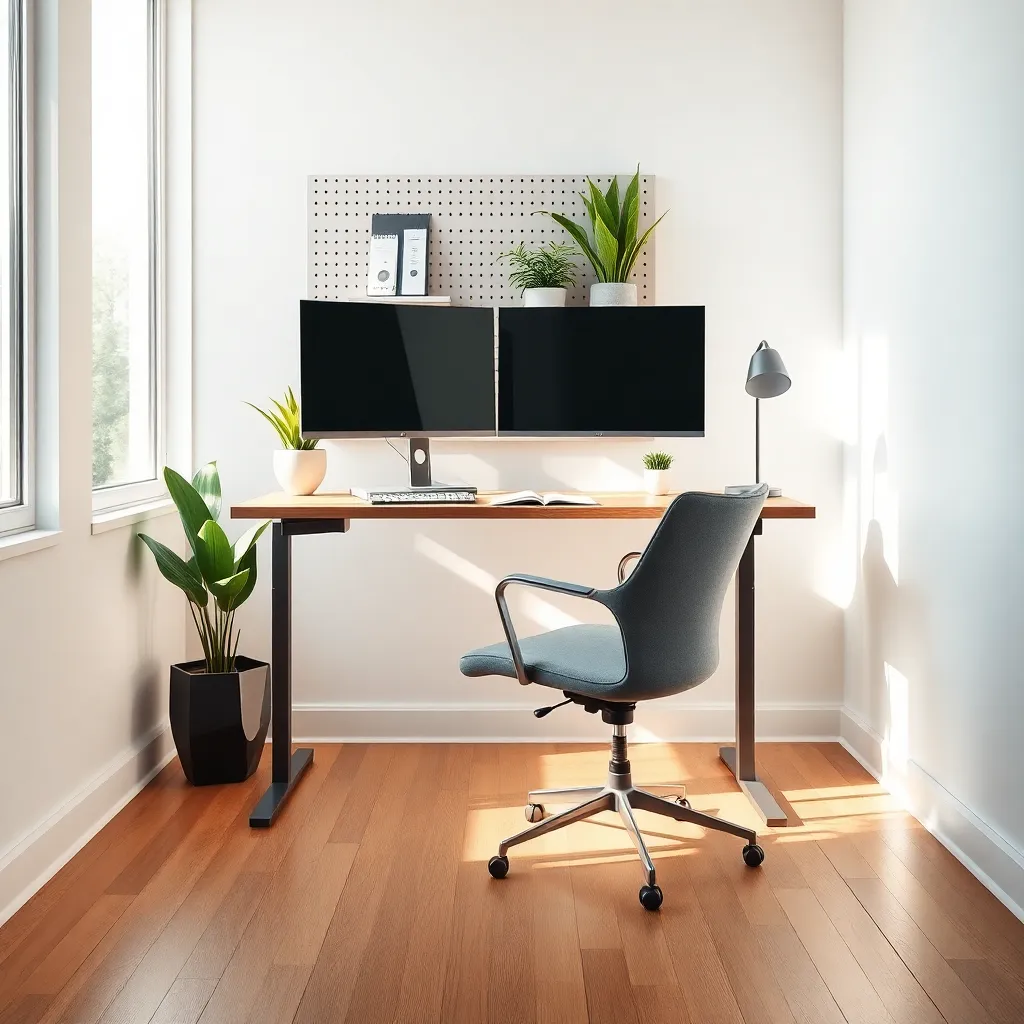
Choosing ergonomic furniture is essential for creating a home office that enhances both comfort and productivity. Start by selecting a chair with adjustable height and lumbar support to maintain proper posture during long work hours.
Consider a desk that fits your space while allowing for enough room to work efficiently. Opt for a model with adjustable height settings; this flexibility enables you to switch between sitting and standing, promoting better circulation and reducing fatigue.
Select materials that are not only durable but also aesthetically pleasing. Desks made from solid wood or metal provide sturdiness, while incorporating elements like a glass top can add a modern touch to the room.
For a cohesive look, coordinate your furniture with your existing decor by choosing neutral colors or wood finishes that complement your room’s palette. Integrate ergonomic accessories, such as an adjustable monitor stand or a keyboard tray, to further enhance your workspace’s functionality.
Natural Light Optimization (Boosted Mood and Energy)
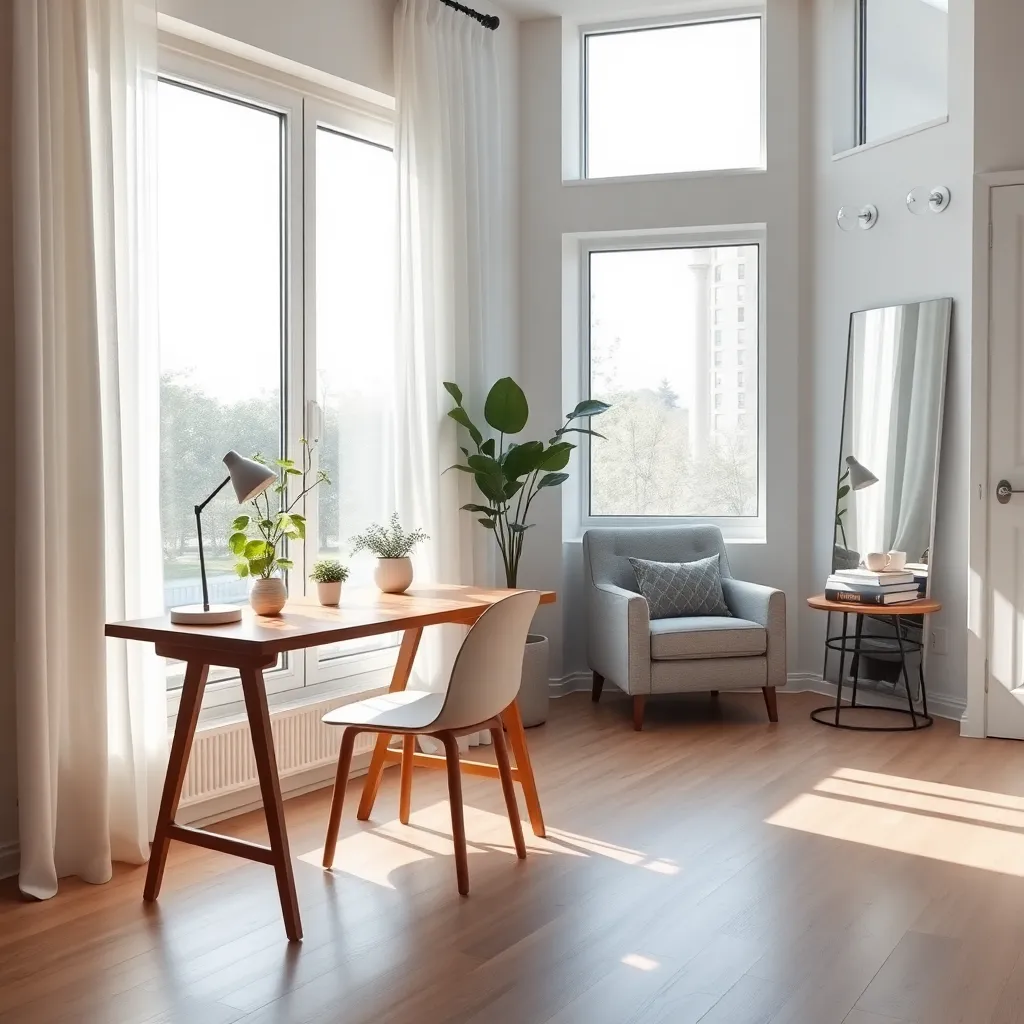
Maximizing natural light in your home office can significantly boost both your mood and energy levels. Start by positioning your desk near a window to take full advantage of daylight, ensuring that your work area is well-lit throughout the day without the need for artificial lighting.
Consider using light, reflective colors for your walls and furnishings to enhance the brightness of the room. Opt for white, soft blues, or pale yellows, which can help reflect sunlight and create a more uplifting environment.
For advanced decorators, consider installing mirrors strategically to amplify the natural light. Placing a large mirror opposite a window can help bounce light around the room, making it feel more spacious and inviting.
Window treatments are also crucial in controlling the amount of natural light. Choose sheer curtains or blinds that allow light to filter through while maintaining privacy, or consider adjustable shades for more control over light exposure during different times of the day.
Color Psychology Application (Creating a Focus-Driven Environment)
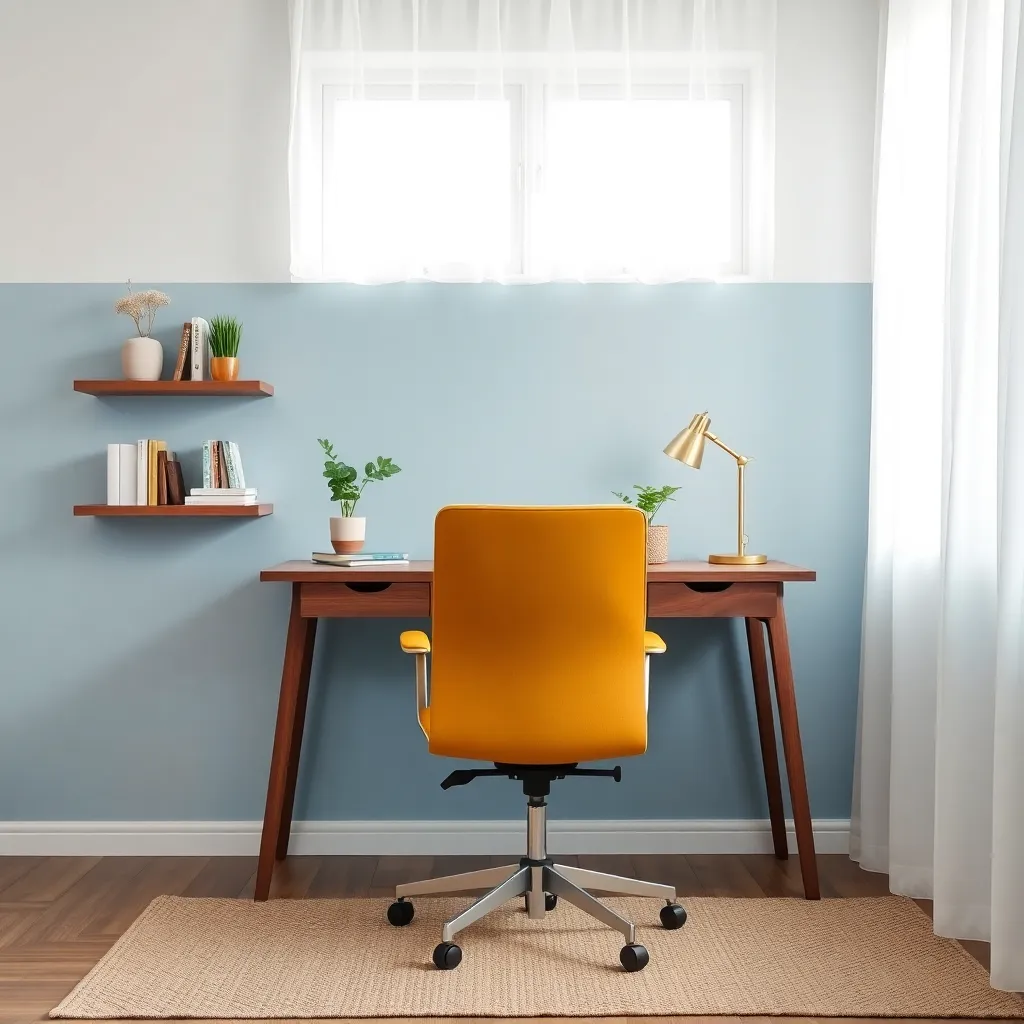
Understanding color psychology can significantly enhance your home office by promoting focus and productivity. By selecting a palette that includes calming blues or energizing yellows, you can create a space that both soothes and stimulates the mind.
Incorporate colors strategically to define different zones within your office. For instance, using a soft green on the walls can provide a peaceful backdrop, while adding bursts of red in artwork or accessories can stimulate creativity and passion.
Choosing the right shades can also influence your concentration levels. Opt for muted tones like taupe or beige for larger surfaces, which can reduce visual distractions, allowing you to concentrate better on tasks at hand.
For those looking to experiment beyond basic palettes, consider using color blocking techniques. By painting one wall a bold shade like teal and keeping the rest neutral, you can create a striking focal point that adds depth and personality to your workspace.
Smart Storage Solutions (Clutter-Free and Efficient Organization)
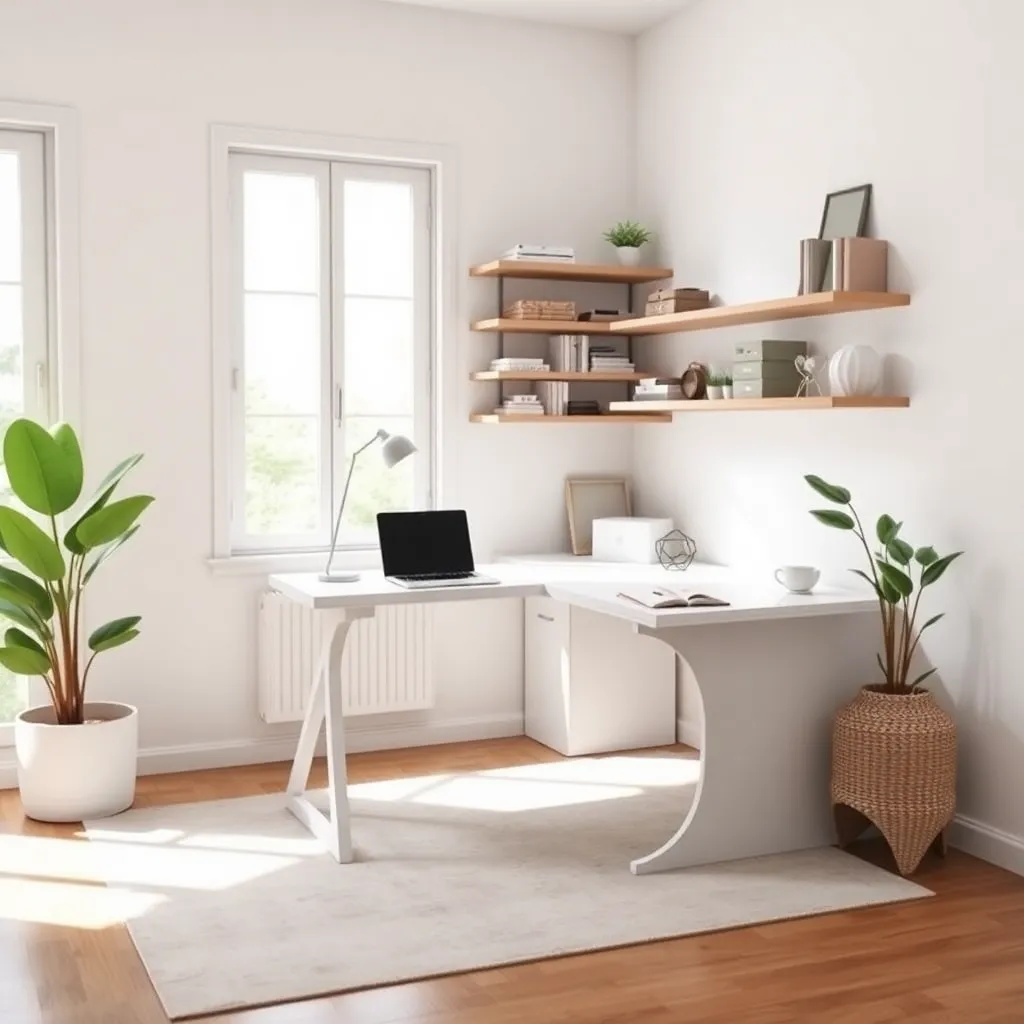
Creating a clutter-free home office begins with integrating smart storage solutions that blend seamlessly with your decor. Consider using floating shelves to keep your desk area clear while still having easy access to frequently used items.
Another effective strategy is to incorporate multi-functional furniture, such as a desk with built-in drawers or a filing cabinet. This not only helps maintain an organized workspace but also keeps essential documents and supplies within arm’s reach.
For those with limited space, vertical storage options can be a game-changer. A tall bookshelf or a pegboard wall can be used to store and display items, maximizing space without sacrificing style.
Advanced decorators might explore modular storage systems, which allow for customization as needs change. Color-coordinate storage bins and boxes to add a touch of sophistication while maintaining a cohesive look.
Biophilic Design Elements (Incorporating Nature for Wellbeing)
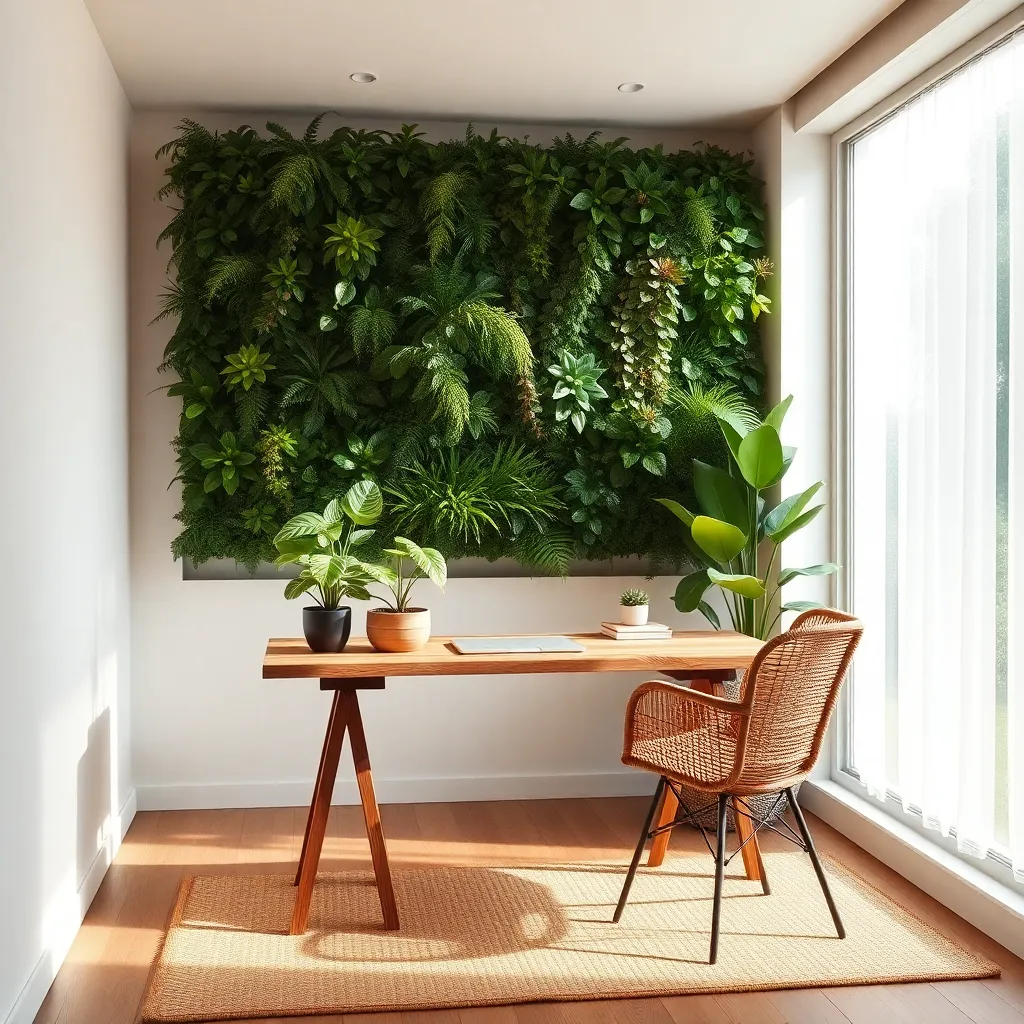
Bringing elements of nature into your home office can significantly enhance your well-being and productivity. Start by integrating natural light as much as possible, placing your desk near a window to soak in sunlight throughout the day.
Incorporate indoor plants to breathe life and color into your workspace. Choose low-maintenance options like succulents, pothos, or snake plants, which not only add aesthetic appeal but also purify the air.
Beyond plants, use materials that evoke a natural feel, such as wood, stone, or jute. A wooden desk or shelves can create a warm, grounded atmosphere, while a jute rug adds texture and comfort underfoot.
For those looking to add a touch of sophistication, consider a small water feature or a living wall. A tabletop fountain can provide soothing ambient noise, and a living wall can become a striking focal point, enhancing both mood and air quality.
Acoustic Treatment Strategies (Minimizing Distractions for Better Concentration)
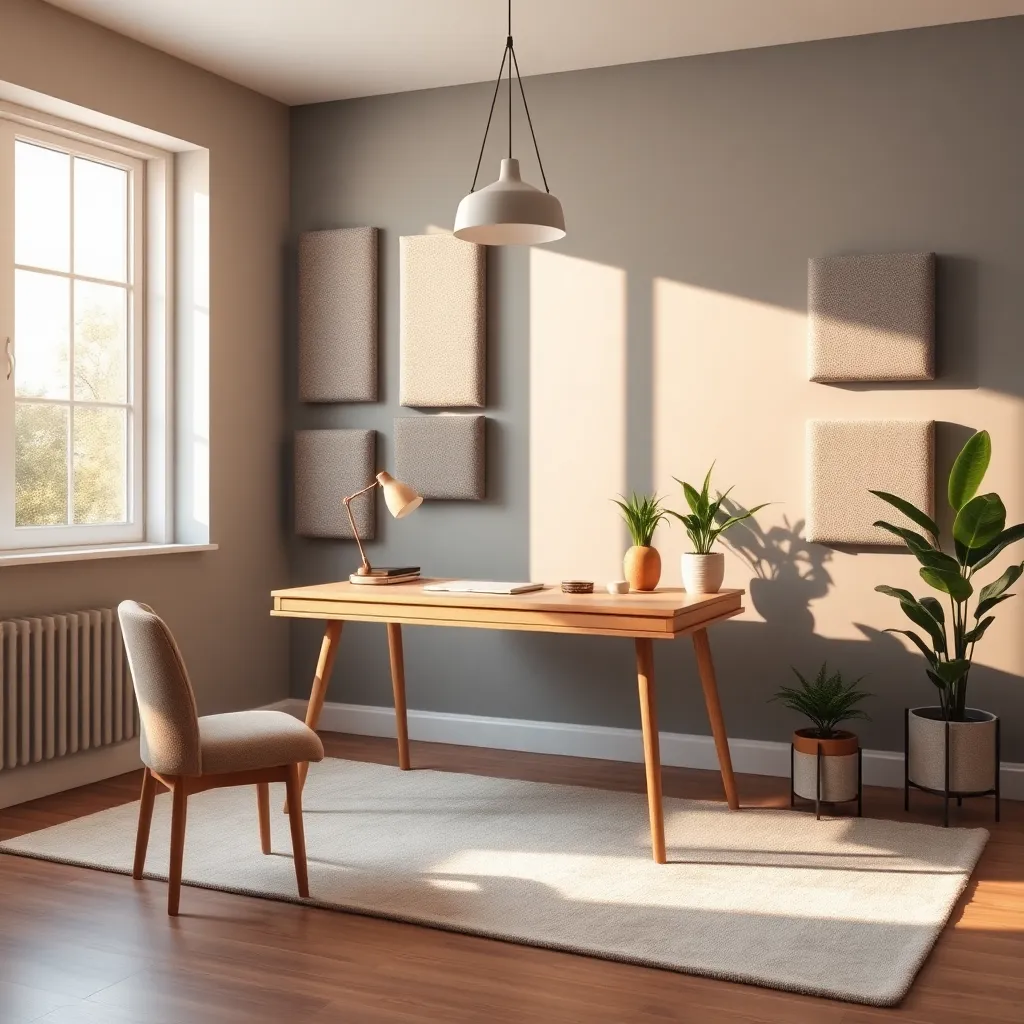
To create a focused and productive home office, integrating effective acoustic treatments is crucial. One of the simplest methods is to add heavy drapes or curtains to your windows, which can significantly reduce external noise.
Consider placing a plush area rug on your floor to absorb sound and add comfort. Layer this with a pad underneath to enhance its sound-dampening properties, especially in hardwood or tiled rooms.
For more advanced sound control, install acoustic panels on your walls to prevent echoes and minimize distractions. These panels come in various styles, allowing you to choose a design that complements your existing decor while enhancing the room’s acoustics.
Additionally, strategic placement of bookshelves loaded with books can act as natural sound absorbers. Positioning them against shared walls not only aids in noise reduction but also adds a sophisticated element to your home office setup.
Personalized Décor Accents (Reflecting Personality and Inspiration)
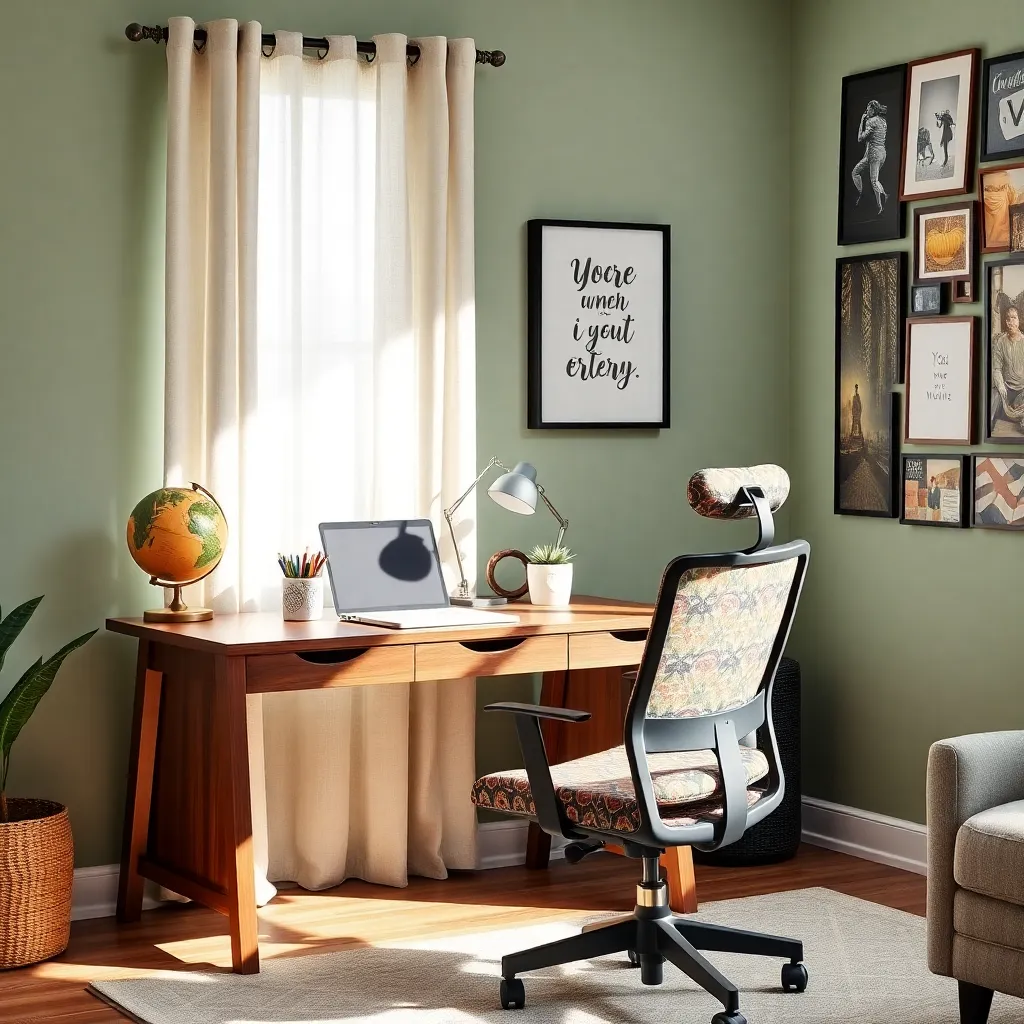
Personalizing your home office with décor accents that reflect your personality can significantly enhance your work environment. Start by choosing a color palette that resonates with you—whether it’s calming blues for tranquility or vibrant yellows for energy, your color choices can set the tone for productivity.
Incorporate art pieces or decor items that inspire you, such as a motivational quote framed on the wall or a sculpture that sparks creativity. These elements should be strategically placed in your line of sight to keep you motivated throughout the day.
Consider adding texture to your space with throws, rugs, or cushions that not only provide comfort but also add layers of visual interest. Opt for materials that align with your personal tastes, such as a plush velvet cushion for a touch of luxury or a textured wool rug for a cozy feel.
For those who enjoy a more advanced approach, consider creating a gallery wall with a mix of personal photographs, prints, and unique frames. This can serve as a dynamic focal point in your office, encouraging creativity and making your workspace truly feel like home.
Conclusion: Growing Success with These Plants
In creating the perfect home office, we explored seven foundational relationship concepts: the importance of clear communication, setting and respecting boundaries, the power of shared goals, maintaining work-life balance, nurturing a supportive environment, fostering trust, and embracing flexibility. Each of these principles not only enhances your workspace but also strengthens the bonds that tie us to those we care about. As you implement these strategies, start by having an open conversation with your partner or family about your home office needs and expectations. This small step can pave the way for a collaborative and harmonious living space.
To ensure these insights remain at your fingertips, save or bookmark this article now. It will serve as a handy guide whenever you need a reminder of how to reinforce the connection between your personal and professional life. Remember, the path to relationship success is a journey, and with these tools, you’re well-equipped to nurture a thriving environment both at home and beyond. Embrace the opportunity to grow together, and let this be the beginning of a more connected and supportive living space.
